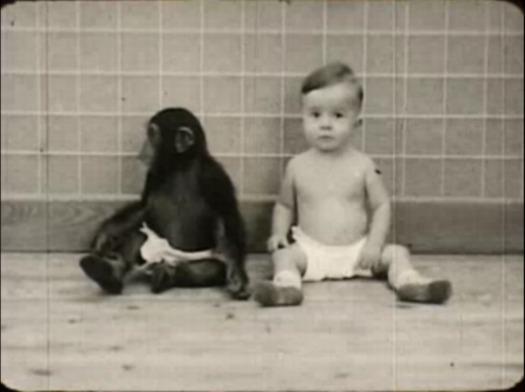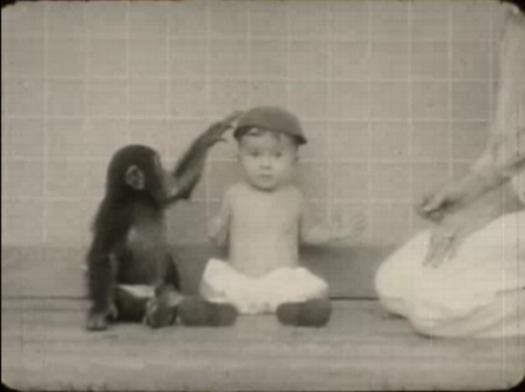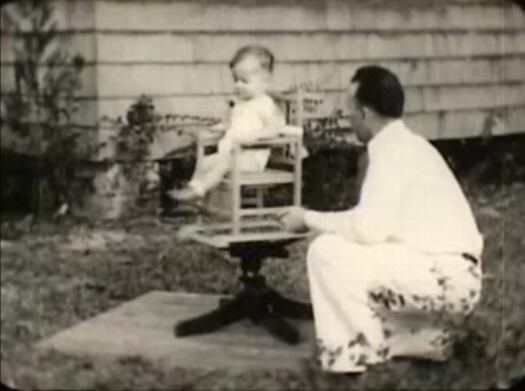You've Come A Long Way, Baby Science

It's funny. At first, you see the title of the lone 1932 silent film, Comparative Tests On A Human And A Chimpanzee Infant Of Approximately The Same Age, Part 2, and it seems like too little. But by the time the eleventh and final minute rolls around, and you see some anthropoid researcher from Yale tie that poor kid into a chair and start spinning him around until he cries and holds on for dear life, and then the guy sticks his finger in the kid's eye to check for tears? [update: uh, no. saccabes. see the comments]It definitely feels like too much.
Beneath the enduring mystery of what it means to be human, the basic scientific questions behind the nine-month-long experiment seem plausible enough: holding environmental factors constant, what behavioral and developmental differences, if any, exist between humans and our closest animal relatives?

From there, though, 1930's Science pretty much veers off the track. For example, the first thing they test for is handedness. Wait, back up. The first first thing they do is raise a baby chimpanzee like a human for nine months, including dressing him in little shoes. At first, I thought the chimp and the kid were raised in the same family, as brothers, but that doesn't seem to be the case.

Not that it matters; the tests seem so random and human-biased, I'm surprised they didn't add vine-swinging or banana peeling to "balance" it out. Still, I guess it was the best they knew how to do. If anything, it helps remind us to keep an open mind; a generation or two from now, our own scientific certainties could look as crazy as a chair-spinning chimp in Buster Browns.
No comments:
Post a Comment